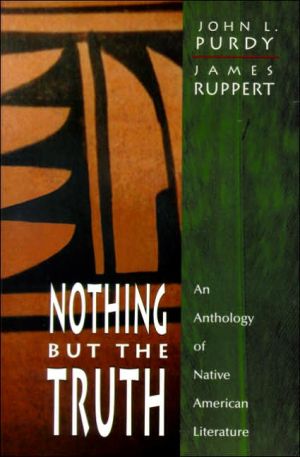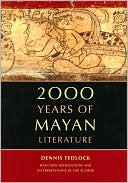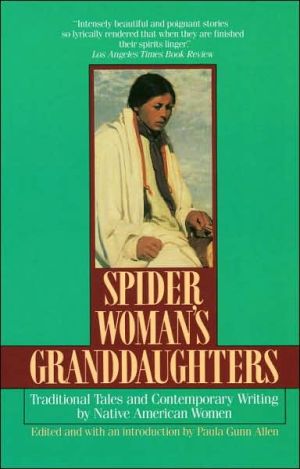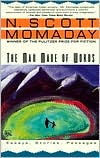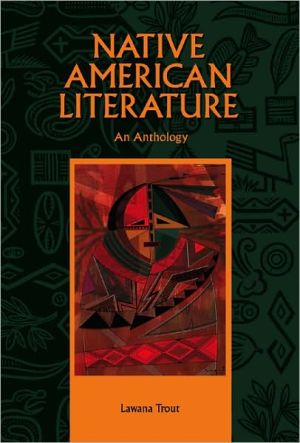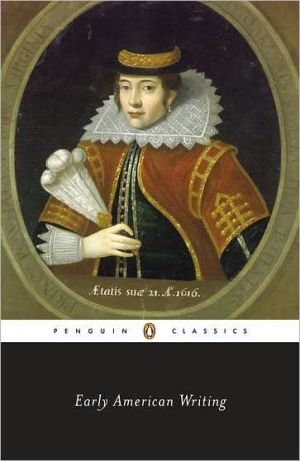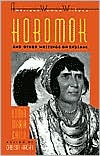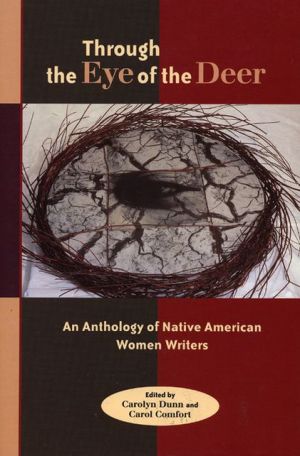Nothing But the Truth : An Anthology of Native American Literature
AN ANTHOLOGY THAT features both classic and contemporary Native American Literatures, Nothing But The Truth is a healthy collection of the best works of Native American Literature. The pieces of literature selected for this anthology are core texts used in classrooms and are conductive to discussion in the classroom. Fiction, Nonfiction, Poetry, and Drama are included as well as some theoretical discussion and introductions by various scholars and teachers of the literature.
Search in google:
This anthology includes some of the best works of Native American Literature — with a good representation of major authors, geographic dispersion, gender balance, and a variety of genres. Its illustrative and popular material promote a deeper appreciation of different themes and approaches. Complete works that have become classics in the field, combined with ones from the modern era, make this collection rich in historical and theoretical context.Selections of non-fiction, fiction, poetry, and drama, include works by Paula Gunn Allen, Elizabeth Cook-Lynn, Carter Revard, Leslie Marmon Silko, Sherman Alexie, Kimberly Blaeser, Peter Blue Cloud, Louise Erdrich, Scott N. Momaday, Simon Ortiz, and many more.An effective introduction to Native American Literature for readers interested in this area of writing.
PREFACE\ As the old saying goes, necessity is the mother of invention, and necessity certainly drove the creation of this anthology. As any educator will tell you, one of the difficult duties we face year after year, semester after semester, is the selection of texts for classes. Even in the case of literature courses that cover the writings of "dead white guys" who no longer produce literary works, there is still a continuous stream of secondary books about them and myriad analyses of their writings. In the area of writings by American Indians, this task is even more difficult because of the growing body of secondary sources, of course, but also because of the tremendous increase in the numbers of pieces of literature produced by writers of Native American descent. It is a perplexing quandary when one tries to choose from such a wonderfully rich selection.\ Such difficulties also arise when one tries to compile an anthology, and there are some very good examples in print today. Some try to provide the widest coverage: an expansive array of writings from as many nations and tribal groups as possible. Some try to provide an all-inclusive sense of history: coverage from the late eighteenth century to the present. Others center on specific thematic concerns—identity issues, political policies—and thus narrow their scope. Some simply opt for the editors' favorites.\ This present endeavor, however, cuts across the various attempts of the past, and it has one simple, perhaps obvious, guiding principle. It was our intention to compile the pieces of literature that our colleagues who teach Native American literature use time and time again. To accomplish this task, we surveyed our colleagues around the globe and asked them to give us a list of their "core" texts. The questionnaires—sent by post and also posted on the Internet—covered all genres and eras. Our only stipulation was that we were looking for complete works of literary art and not "excerpts," that is, sections of longer works, like novels, which rarely stand as discrete units of art. (There are short stories included here that became novel chapters later.) The response was wonderful, and although there were some obviously central authors listed on significant numbers of questionnaires, there was also a great diversity in the recommendations they made.\ This may seem to be a very self-serving effort: to create the anthology we always wanted to have. To a degree, this is true, but primarily this book is an attempt to construct an effective introductory collection to written Native literature. In our questionnaire, we asked for lists of pieces used most often because "they work." We did not get into a lengthy attempt to define this vague qualifier, believing that every educator knows when something has a profound, productive effect on a class, an audience. We simply wanted to bring together literary pieces that have this effect, because we also realize that the students who read these pieces of literature in the myriad courses our colleagues teach at a wide array of public and private institutions around the globe constitute the reading public itself; they come from every element of society, cutting across every group distinction employed in the world today: class, gender, race, and political ideology, to name just a few. Nonetheless, the literature speaks personally and compellingly to them, and that is a remarkable achievement.\ We truly hope it speaks to you, the current reader, as well.\ Acknowledgments\ We want to thank all the people who have made this anthology possible, including all our colleagues around the world who took the time to answer our survey and thus provided the list of works they find most useful in their courses. We would also like to thank Steven Beech, who tracked these works down, and our editor, Carrie Brandon, for helping us realize our goal. Finally, however, our greatest appreciation goes to the Native American writers and storytellers who have made such remarkable contributions to the literary arts and enriched our society with their myriad voices and their illuminating insights.\ We would also like to thank the reviewers of our manuscript for their input on this anthology: Jacquelyn Kilpatrick, Ph.D., Governors State University; Gloria Lynn Larrieu, Southwestern Indian Polytechnic Institute; Louis Roma-Deeley, Paradise Valley Community College; Patrick Clark Smith, University of New Mexico; and Norma Clark Wilson, University of South Dakota.\ — John Purdy,\ James Ruppert
NON-FICTION.Introduction. Susan Pérez Castillo, Postmodernism, Native American Literature and the Real: The Silko-Erdrich Controversy. Elizabeth Cook-Lynn, (Crow Creek Dakota) The American Indian Fiction Writers: Cosmopolitanism, Nationalism, the Third World, and First Nation Sovereignty. Vine Deloria, Jr., (Sioux) Indian Humor. Charles Eastman (Ohiyesa), (Sioux) The Ghost Dance War. Paula Gunn Allen, (Laguna Pueblo, Sioux) The Sacred Hoop: A Contemporary Perspective. N. Scott Momaday, (Kiowa) The Man Made of Words. David L. Moore, Decolonializing Criticism: Reading Dialects and Dialogues in Native American Literatures. Simon J. Ortiz, (Acoma Pueblo) Towards a National Indian Literature: Cultural Authenticity in Nationalism. Carter Revard, (Osage) History, Myth, and Identity Among Osages and Other Peoples. Greg Sarris, (Miwok-Pomo) The Woman Who Loved a Snake: Orality in Mabel McKay's Stories. Leslie Marmon Silko, (Laguna Pueblo) Language and Literature from a Pueblo Perspective. An Old-Time Indian Attack Conducted in Two Parts: Part One—Imitation “Indian” Poems/Part Two—Gary Snyder's Turtle Island. Brian Swann, Introduction: Only the Beginning.FICTION.Sherman Alexie, The Approximate Size of My Favorite Tumor. This is What it Means to Say Phoenix, Arizona. Beth Brant, (Mohawk) Swimming Upstream. Elizabeth Cook-Lynn, (Crow Creek Dakota) A Good Chance. The Power of Horses. Louise Erdrich, (Anishinaabe) The Red Convertible. Eric Gansworth, (Onondaga) Unfinished Business. Diane Glancy, (Cherokee) Aunt Parnetta's Electric Blisters. Paula Gunn Allen, (Laguna Pueblo, Sioux) Deer Woman. Gordon Henry, (Anishinaabe) Sleeping in Rain. Linda Hogan, Aunt Moon's Young Man. Pauline E. Johnson, (Mohawk) As It Was in the Beginning. Thomas King, (Cherokee) Borders. A Seat in the Garden. D'Arcy McNickle, (Métis) The Hawk is Hungry. Jim Northrup, (Anishinaabe) Veterans' Dance. Simon J. Ortiz, (Acoma Pueblo) The Killing of a State Cop. Louis Owens, (Choctaw, Cherokee) Blessed Sunshine. Carter Revard, (Osage) Report to the Nation: Repossessing Europe. Greg Sarris, (Miwok-Pomo) How I Got to Be Queen. Leslie Marmon Silko, (Laguna Pueblo) The Man to Send Rain Clouds. Tony's Story. Yellow Woman. Mary TallMountain, (Koyukon Athabaskan) The Disposal of Mary Joe's Children. Luci Tapahonso, (Navajo) All the Colors of Sunset. Anna Lee Walters, (Pawnee-Otoe) The Warriors. Zitkala-Sa (Gertrude Bonnin), (Sioux) The Soft-Hearted Sioux.POETRY.Sherman Alexie, (Spokane, Coeur d'Alene) 13/16. The Business of Fancydancing. Capital Punishment. Defending Walt Whitman. The Exaggeration of Despair. How to Write the Great American Indian Novel. Crazy Horse Speaks. Paula Gunn Allen, (Laguna Pueblo, Sioux) Dear World. Kopis'taya, A Gathering of Spirits. Soundings. Kimberly Blaeser, (Anishinaabe) Living History. Rewriting Your Life. Rituals, Yours—and Mine. Where I was That Day. Peter Blue Cloud, (Mohawk) Bear: A Totem Dance as Seen by Raven. The Old Man's Lazy. Rattle. To-ta Ti-om. Turtle. Yellowjacket. Drum. Reflections on Milkweed. Joseph Bruchac, (Abenaki) Above the Line. Blessing the Waters. Copal, Red Blood: Chiapas, 1998. Chrystos, (Menominee) Today Was a Bad Day Like TB. Nora Dauenhauer, (Tlingit) Salmon Egg Puller—$2.15 an Hour. Louise Erdrich, (Anishinaabe) Captivity. Indian Boarding School: The Runaways. Jacklight. Old Man Potchikoo. Dear John Wayne. Turtle Mountain Reservation. Joy Harjo, (Muskogee) She Had Some Horses. Transformations. I Give You Back. Call It Fear. Eagle Poem. The Woman Hanging from the Thirteenth Floor Window. Grace. The Woman Who Fell from the Sky. Linda Hogan, (Chickasaw) Blessing. Song for My Name. Bamboo. Celebration: Birth of a Colt. Drought. The New Apartment, Minneapolis. The Truth Is. Elk Song. Geraniums. Heritage. It Must Be. Map. Morning: The World in the Lake. Maurice Kenny, (Mohawk) Akwesasne. Legacy. Sweetgrass. They Tell Me I Am Lost. Wild Strawberry. Wolf “Aunt.” Joyce carlEtta Mandrake, (Anishinaabe) Who Am I. N. Scott Momaday, (Kiowa) Angle of Geese. The Bear. At Risk. December 29, 1980: Wounded Knee Creek. The Colors of the Night. The Eagle-Feather Fan. Simon J. Ortiz, (Acoma Pueblo) Bend in the River. The Creation, According to Coyote. Dry Root in a Wash. My Father's Song. A Story of How a Wall Stands. The Boy and Coyote. Carter Revard, (Osage) And Don't Be Deaf to the Singing Beyond. Driving in Oklahoma. In Kansas. An Eagle Nation. What the Eagle Fan Says. Wazhazhe Grandmother. Wendy Rose, (Miwok-Hopi) I Expected My Skin and My Blood to Ripen. If I Am Too Brown or Too White for You. Three Thousand Dollar Death Song. Leslie Marmon Silko, (Laguna Pueblo) Indian Song: Survival. Untitled. Untitled, From Ceremony. Storytelling. Story from Bear County. Toe'osh: A Laguna Coyote Story. When Sun Came to Riverwoman). Mary TallMountain, (Koyukon Athabaskan) Good Grease. The Last Wolf. There is No Word for Goodbye. Matmiya. Luci Tapahonso, (Navajo) Blue Horses Rush In. In Praise of Texas. Light a Candle. Raisin Eyes. James Welch, (Black Feet-Gros Ventre) Christmas Comes to Moccasin Flat. Surviving. Thanksgiving at Snake Butte. Snow Country Weavers. Riding the Earthboy 40. Roberta Hill Whiteman, (Oneida) Dream of Rebirth. For Heather, Entering Kindergarten. In the Longhouse, Oneida Museum. Black Eagle Child Quarterly. Ray Young Bear, (Mesquakie) The First Dimension of Skunk. Winter of the Salamander. The Language of Weather. Morning Talking Mother. The Significance of a Water Animal. Nothing Could Take Away the Bear-King's Image.DRAMA.Gerald Vizenor, (Anishinaabe) Harold of Orange: A Screenplay.Timeline.Credits.Index.
